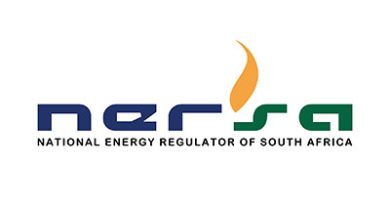Considering the Institutional Environment in Realising the Benefits of Prepaid Meters
OVERVIEW OF PREPAID METERS
Dr Emmanuel Ngcobo & Dr Pieter Crous
The Prepaid meters are installed throughout South Africa for electrical and water services as a means of enabling local authorities to manage the billing and collections from metered services. The design philosophy of prepaid metering is that the customer pays upfront for their service charges, whether for electricity or water consumption based on the approved tariff rates. The prepaid metering systems for water services are robust, having an extensive history within South Africa over the last 25 years. Prepaid meters form part of the smart meter bouquet of products that are available. Importantly, prepaid meters differ from automatic meter reading in that customers have to pay upfront for services and the prepaid meter system restricts supply where customers do not pay for services.
The increasing consumer debt for municipal services has prompted municipalities to explore alternative ways to recover monies for the services rendered. This being in line with section 8 (3) of the Municipal Finance Management Act 56 of 2003, that enforces municipalities to take all reasonable steps available to ensure all monies due to the municipality are received.
The upfront payment through the installation of prepaid meters has been predominantly viewed as the most effective means of revenue collection, but this does pose a number of challenges if proper due diligence has not been carried out.
The typical meter management lifecycle can be reflected as follows:

The article focuses on the example of prepaid water meter systems and is written from the perspective of implementing prepaid metering systems at Water Service Authorities within the South African context. The article explores the institutional environment required to ensure that prepaid meters are not only implemented, but the potential revenue enhancement benefits are realised.
Prepaid Water Meters
The prepaid water metering system includes a physical prepaid meter installation and the prepaid vendors and prepaid billing system to manage the customer information and purchases. The physical prepaid meter installation consists of a water meter and ancillary devices that include a valve to open and close the water supply and a device to allocate the proportionate volume of water for an amount of monetary credit. Prepaid meters are sold as a single unit, which means that the capital cost associated with the meters is significantly higher than the cost of conventional meters. The prepaid metering device is able to rapidly identify whether the customer meters have been tampered with, or there are on-property leaks. These functionalities are mutually beneficial for the customer and the local authority.
In South Africa, the communication between the prepaid water meter and the vendor purchase system is performed either through a token-based prepaid system or a Standard Transaction System (STS)-based prepaid system. These communication systems are implemented for both domestic and bulk customer meter applications.
Once the credit has been purchased through the prepaid vendor system, the customer loads the credit onto the water meter through the electronic communication device or user interface, and the valve is opened by the metering system.
The prepaid vendor systems have benefits to the authorities, in that the systems can generate standard reports for water service authorities as required. These reports include customers with low or no purchases, cash collection, sales by area, monthly meter management summary, sales vs. consumption reporting, and leak, tamper and valve status reports.
Implementation
Yet, despite all the benefits, the implementation of prepaid water meters has had mixed results. A critical success factor is in community acceptance – not only of the metering system, but the entire meter management lifecycle associated with the prepaid metering system. The potential benefits include:
Local Authority Advantages
- Upfront payment (improved cash flow)
- Reduction in bad debt
- Minimise meter reading errors as the meters manage the consumption.
Customer Advantages
- Consumption is managed by customer needs
- Potential simplified payment methods
The potential disadvantages include:
Local Authority Disadvantages
- High capital start-up costs
- Increased monitoring and evaluation requirements
- Additional operating and maintenance costs
- Tariffs may need adjustment for prepaid meters
Customer Disadvantages
- Payment is enforced
- No water services if system malfunctions
Risks
Some generic risks relating to the prepaid water metering system include:
- Customers cannot buy credit when the prepaid vending systems are offline or the meter battery is empty;
- Local authorities will not generate revenue from meters where the prepaid meters are vandalised, tampered with, or damaged;
- Local authorities will not generate revenue from meters where the prepaid meters are incorrectly linked to the customer on the billing system; and
- Meters will be inaccurate where the prepaid meters are incorrectly installed per the relevant meter installation guidelines and standards.
Requirements
The installation or rollout of prepaid water meters includes the consideration of a number of items that exceed the considerations about the capabilities (and limitations) of the meters. The critical considerations are discussed below:
- Capital Investment – Prepaid meters are significantly more expensive than conventional meters. You will need to manage the cashflow to manage the successful rollout of prepaid meters on the annual budgets.
- Rollout Prioritisation – It is important that areas for prepaid meter rollouts are not only based on areas where payment is not received for services, but must also consider affordability and capacity of the areas to maintain the prepaid metering system, which includes the type of vendors used and the location to the customers.
- Meter Installation Monitoring Support – It is critical that the meters are installed correctly and that all meter and customer information is accurately reflected on required information management systems. These risks can be managed through the use of standard processes and municipal guidelines for meter installations, and quality control of the meter installations to ensure that the meters are installed per the relevant standards, municipal guidelines, and supplier specifications.
- Meter Operational Monitoring Support – Develop key performance indicators for the rollout of the prepaid meters so that you can monitor the implementation of the system to ensure that value for money is achieved in the prepaid metering system. These indicators must be applicable to the entire meter management lifecycle.
- Procurement structure – Each prepaid metering system is bespoke and will require that the meters are managed through specific suppliers. It is important to ensure that the relevant Service Level Agreements are in place to support the sustained use of the prepaid metering system with nominal contractual disputes or system downtime. Ensure that you have sufficient vendors allocated to each area to allow for customers to be able to adequately reach the vendors.
- Inventory management – It is critical to make sure you have sufficient stock for replacements and spares. Prepaid water meters rely on battery powered solutions, and despite the capacity of the batteries, these need to be replaced. Ensure that the suppliers are held to the prescribed performance of their solutions. Further, manage stock and warrantees such that the meters do not stay on the shelf for long (and the batteries are depleted), or that you don’t wait too long for lead-times (where meters require replacement).
- Consider lifecycle impact on the business processes – The installation of prepaid meters will significantly affect the business processes of the conventional meter management lifecycle. It is critical that workshops are run to ensure that adequate resources and processes are in place to manage each component within the lifecycle and that adequate processes are in place to ensure that any defects or faults can rapidly be identified and attended to.
- Review and update bylaws – It is critical that the relevant bylaws, such as the water bylaw or credit control bylaw are in place and reflect the operations of the prepaid meters – such as the fact that the supply will be stopped where there is no credit on the meter. The lack of such bylaws can have significant legal implications to the institution.
Closing Remarks
Prepaid metering technologies are an enabler for enhanced revenue collection. It is important to consider all aspects of the institutional environment prior to the adoption of prepaid metering, as this will ensure that the technology aligns with institutional capacity and systems to ensure that there is sufficient support for the realisation of the proposed benefits from prepaid meters.
Prepaid and other smart metering solutions will require extensive capital to rollout within the entire supply area, and this rollout will not be implemented overnight. There is an opportunity to use National Treasury’s Municipal Public-Private Partnerships Guideline to develop a feasibility study to determine whether it would be applicable to make use of an external private party to fund and manage the entire meter management lifecycle. The use of a Public-Private Partnership is not only applicable to local authorities who cannot fund the rollout internally, as the feasibility study focuses on the entire meter management lifecycle at the institution and considers whether the approach would provide value for money to you.
Prepaid meters are not a replacement for the meter management processes, as the metering lifecycle will continuously require quality control measures and support to ensure that all metered consumption is accounted for in the billing processes – specifically related to calculating distribution losses. Where more than one metering system is implemented, it is recommended that a meter management system be implemented to integrate the various billing systems into a centralised system, which preferably provides spatial analysis of the customer consumption and revenue generated thereof.




